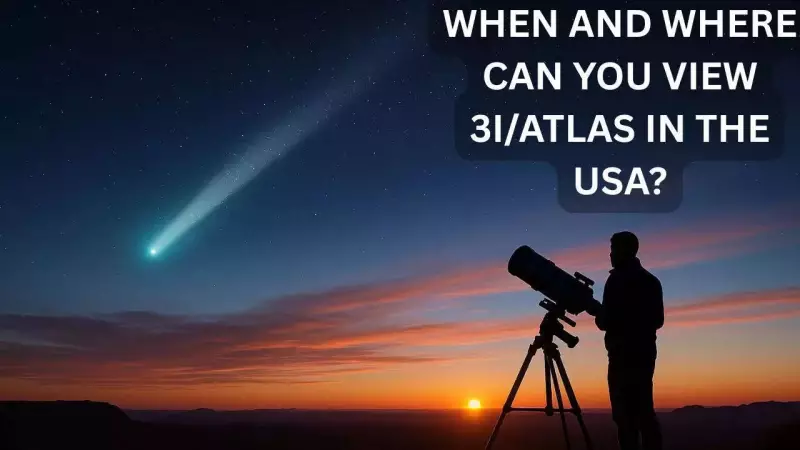
Get ready for an extraordinary celestial spectacle! A rare visitor from beyond our solar system, Comet 3I/ATLAS, is currently gracing American skies, offering astronomy enthusiasts a once-in-a-lifetime viewing opportunity.
What Makes This Comet So Special?
Unlike regular comets that orbit our Sun, 3I/ATLAS is an interstellar traveler that originated from another star system entirely. This makes its appearance particularly significant for astronomers and space enthusiasts alike.
Best Viewing Times and Locations
For optimal viewing conditions, astronomers recommend looking toward the northern skies during the early morning hours. The comet is currently positioned in the constellation Ursa Major, making it relatively easy to locate for seasoned stargazers.
Prime Viewing Window: The comet will be most visible through this week, with peak brightness expected around mid-week. Early risers will have the best chance to spot this celestial visitor between 4:00 AM and 5:30 AM local time.
How to Spot the Interstellar Visitor
- Find a location with minimal light pollution
- Use binoculars or a small telescope for better visibility
- Look toward the northern horizon in the pre-dawn hours
- Allow your eyes 15-20 minutes to adjust to the darkness
Why This Event Matters
The appearance of 3I/ATLAS represents only the third confirmed interstellar object to visit our solar system, following the famous Oumuamua in 2017 and Comet Borisov in 2019. Each such visit provides scientists with invaluable data about other star systems and the formation of planetary bodies across the galaxy.
"These interstellar visitors give us snapshots of what's happening in other planetary systems," explains Dr. Sarah Johnson, an astrophysicist at the National Radio Astronomy Observatory. "Studying their composition helps us understand how common or unique our own solar system might be."
What to Expect When Viewing
While not visible to the naked eye, the comet appears through telescopes as a faint, fuzzy patch with a distinctive greenish glow. Its unique trajectory and speed clearly mark it as an object from beyond our solar neighborhood.
Don't miss this extraordinary opportunity to witness a piece of another star system passing through our cosmic backyard. Set your alarms, grab your telescopes, and prepare for an astronomical experience you'll remember for years to come!





